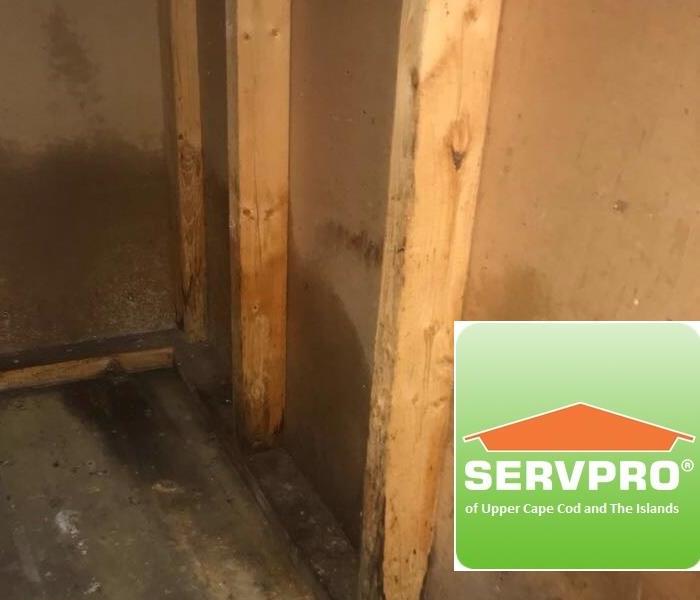5 Guiding Steps for Mold Remediation after a Storm
4/19/2018 (Permalink)
 SERVPRO of Upper Cape Cod & the Islands is a leader in the storm damage remediation industry. They offer exceptional water & mold damage restoration.
SERVPRO of Upper Cape Cod & the Islands is a leader in the storm damage remediation industry. They offer exceptional water & mold damage restoration.
We know the storms this winter did a lot of damage in our area with widespread flooding and falling trees. It’s during these times when water damage from a storm can leave you exposed to having a mold problem if not cleaned up immediately or professionally. Mold is a fungus that grows in areas that have moisture. Its development in the different areas of the house or office gives off an unpleasant odor coupled with an unaesthetic view. It is an awful sight to look at. It grows in filaments and spreads if left unchecked. The bathrooms, walls, ceilings, kitchen cabinets and wardrobes are a few of the significant spaces that get affected by mold. Recently the towns of Cape Cod, Nantucket, and Martha’s Vineyard were affected by nor’easter storm Skylar, Riley and Cyclone Bomb. Their adverse effects were due to strong winds, snow, and flooding. As we are well aware of the fact that water is one of the important constituents in that help in boosting growth since it creates moisture if left untouched at a space. Read ahead to know how to go about remediation at your property after a storm.
Look at the following five steps that should be followed for basic and quick restoration:
Evaluate Moisture
Assessing spore growth involves more than just looking at what's clearly and visibly growing on the walls or in a corner. First, understand that the reason behind all unwanted spore growth is water and moisture. The ultimate goal is to identify the moisture source and use its location to help locate all mold growth.
Remediation Plan
Before we start the remediation process, it is best to document the situation with photos which is standard with our service. This will be useful for the restoration team and will also help the claim manager from the insurance company to help determine coverage. It will assist in developing a remediation plan, which typically answers questions like work beginning time, work completion time, performing the remediation, any testing that should be done, and will homeowners be temporarily relocated – all things are noted down in this document.
Extent of the Contamination
Mold growth is usually never restricted to one specific area. Hence, you need to calculate the extent of the contamination. This will decide how you approach its removal and clean up. The goal of remediation is to clean up the growth within the home and to avoid exposing residents to large amounts of it.
Mold Remediation
Remediation involves cleaning up existing mold with minimized exposure to one’s self as well as loved ones. The procedure will also prevent new growth by addressing the moisture source based on the calculations of the contamination area. This step is further divided into steps to have an effective approach. Things to be done are:
- Repairing water problem
- Isolation of contaminated area
- Removing soggy materials
- Discarding damaged, affected and wet materials in plastic bags
- Cleaning of porous and wood surfaces that have been affected
- Cleaning all areas along with egress
- Proper inspection, just to be sure
- Drying of the materials
- Repairing or replacement of materials
Determining Successful Cleanup
In the end, we have to be sure that our clean-up efforts after water damage remediation have been successful. It is similar to a judgment call after all the procedure. According to EPA guidelines, look for the following:
- Verification of moisture problem by revisiting the home soon after remediation and you shouldn't see any signs of recurring water damage
- Checking for no sign of visible mold, materials damaged by it or any odors that may be there in its presence
- Residents should be able to occupy or re-occupy the home without aggravated health complaints
- Depending on your company and the details of the problem, additional testing by an environmental testing company may be considered after the cleanup to be sure enough.
Storm damage brings problems and mold is one of them. It occurs due to flooding, leakages or blockages in the pipes. Hence, it is better to be attentive to the timely inspection of the pipes before the storm. If you’re facing a mold problem, it will be better to call in professionals from a competent restoration company for effective removal of mold.
Call us now at (508) 888-5985.





 24/7 Emergency Service
24/7 Emergency Service